I have some troubles regarding a linear program I alreday solved and use excel but now i want to do it in r/python beacuse I already reach excels and the solvers limits. Therefore I am asking for help on this specific topic.
I tried it with the lPsovle package by also altering the lp.assign function but I cannot come up with an solution.
The problem is as follows:
Let's say I am a deliverer of an commodity good.
I have differnet depots which serve different areas. These areas MUST be served with their demands. My depots on the other hand, have a constraint regarding their capacity what they can handle and deliver. One depot can serve several areas, but one area can only be served by one depot.
I have the distance/cost matrix for the connections between depots and areas as well as the demand for that areas.
The objective for this solution should be that the areas should be served with the minimal possible effort.
Lets say the cost/distance matrix looks something like this:
assign.costs <- matrix (c(2, 7, 7, 2, 7, 7, 3, 2, 7, 2, 8, 10, 1, 9, 8, 2,7,8,9,10), 4, 10)
So this creates my matrix, with the costumers/areas in the first row/header and the depots in the first column/row names.
Now the demand of the areas/customers is:
assign.demand <- matrix (c(1,2,3,4,5,6,7,8,9,10), 1, 10)
The capacity restrictions, what amount the depos are able to serve is:
assign.capacity <- matrix (c(15,15,15,15), 4, 1)
So now i woukd like this problem to be solved by a lp to generate the allocation, which area should be served by which depot according to these restrictions.
The result should look something like this:
assign.solution <- matrix (c(1,0,0,0 ,0,1,0,0, 1,0,0,0, 1,0,0,0 ,0,0,0,1), 4, 10)
As for the restrictions this means that every column must some up to one.
I tried it with the lpsolve and lp.assign functions from lpSolve but I dont know exactly how to implement that exact kind of restrictions I have and i already tried to alter the lp.assign functions with no success. If it helps, i can also formulate the equations for the lp.
Thank you all for your help, I am really stuck right now :D
BR
